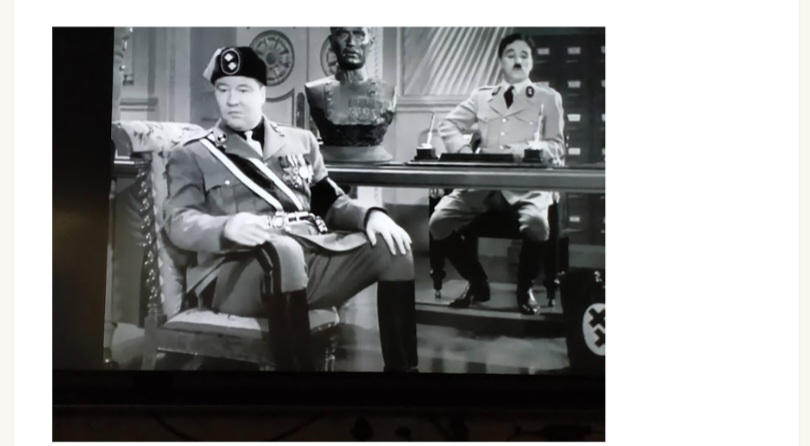Hello readers !!
Understanding Zeitgeist of the 20th Century: From Modern Times to the era of Great Dictators
I am Divya jadav a student of English Department at MKBU and This blog is prepared as a part of a thinking activity to understand the Zeitgeist of the 20th Century: From Modern Times to the Era of Great Dictators.
👉 Introduction of the film :
To the Great Dictator" is a classic 1940 satirical comedy-drama film written, directed, and starring Charlie Chaplin. The film is a political satire that lampoons Adolf Hitler and Benito Mussolini. Chaplin plays dual roles, portraying a Jewish barber and a dictator resembling Hitler. Released during the early days of World War II, the film delivers apowerful anti-fascist message and remains a significant cinematic work addressing thesocio-political issues of its time.
👉The various aspects of Frames in the "Great Dictator ":
While we discuss about the frame study in the film ' The Great Dictator ' in which we find various aspects are.
1) World War :-
The movie reflects the tensions and concerns of the time, with the threat of war looming in Europe. The film's satirical elements and commentary on fascism highlight the broader context of the impending conflict that eventually led to World War II.It might also represent the technological advancements in warfare or the threat posed by such weaponry.
2) Dictatorship:-
"The Great Dictator" satirizes dictatorship and totalitarianism, particularly the regime led by the character Adenoid Hynkel, played by Charlie Chaplin. The film mocks the authoritarian nature of such leaders, highlighting their arrogance, cruelty, and absurdity. Chaplin's portrayal serves as a commentary on the real-life dictatorships of the time, particularly Adolf Hitler's regime in Nazi Germany.
The film uses humor and satire to criticize the dangers and consequences of unchecked power and the impact of dictatorship on society.
In the Above frame, there is the idea of Exhibitionism. We find the disrespect of art and their artists also.
The another important scene of Hynkel seated on a high chair symbolizes his authority, power, and dominance within the hierarchy. It portrays his elevated status and control over the situation. In contrast, Napolini seated on a lower seat represents subordination or inferiority in this power dynamic. It emphasizes a deliberate positioning to showcase the imbalance of power, where one figure is visibly elevated, exerting control and superiority over the other, who appears subservient or diminished in influence.
3) Propaganda :-
The Great Dictator" satirizes and critiques propaganda, especially that employed by totalitarian regimes. Some notable elements of propaganda in the film include:
Symbolism: The use of symbols, such as the double-cross emblem of the fictional country Tomainia, mimics the symbolic imagery associated with Nazi Germany.
Nationalism: The film exaggerates nationalist fervor through Hynkel's speeches and rallies, highlighting the manipulation of patriotic sentiment for political gain.
Dehumanization: The dehumanization of certain groups is depicted, reflecting the real-world tactics used by dictators to justify discrimination and persecution.
Charismatic Leadership: Adenoid Hynkel's charismatic and bombastic leadership style mirrors the cult of personality cultivated by real-world dictators.
By portraying these elements in a comedic and exaggerated manner, Chaplin exposes the dangerous and manipulative nature of propaganda.
Thank you...
References: ChatGPT











